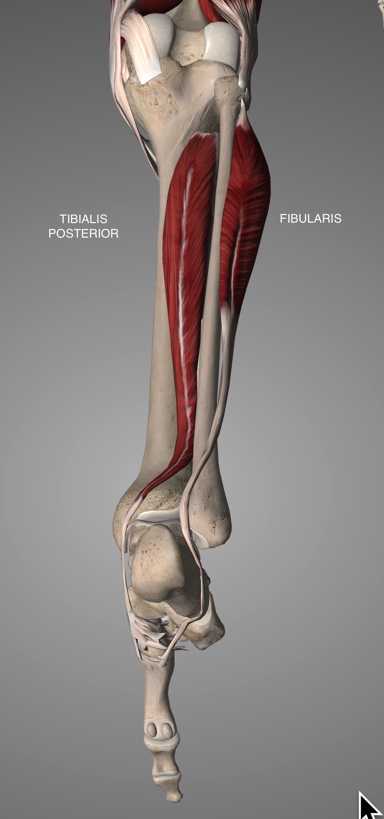The foot consists of 28 bones and over 100 muscles, tendons and ligaments. To clarify the role of these elements, the foot needs to be dissected contextually by identified functions. The functions identified in this paper are 1 or 2 leg stance; gait (walking/running); and turning/lateral stabilization. Anatomically there are specific structures related to each of these roles and by studying the form of the anatomy, optimal use of the function may be inferred. The anatomy is consequentially discussed below in the context of these unique functions. Stance is discussed last as it is a hybrid function of gait and turning anatomy.
A common misperception of foot function/structure is that the foot terminates at the Ankle. This misperception mystifies how feet actually work, leading to inadequate conceptualizations such as the Arch. The functional foot is tightly integrated with the lower leg, which is itself integrated with the upper leg. Most of the motor functions of the foot are carried out in the lower leg, particularly power functions which occur in the large calf muscles (Soleus and Gastrocnemius). Significantly, our Postural Extension, the function which keeps us upright, originates in the soles of our feet and our interaction with Gravity through our feet.
GAIT:
NEUROPHYSIOLOGY
EG: PSOAS AND CONTRALATERAL CORACOBRACHIALIS

LATERAL STABILIZATION:
THE ROLE OF THE FIBULA IN TURNING, LATERAL STABILIZATION AND SHOCK ABSORPTION
STANCE:
HEEL IS FLAT – NOT BALL SHAPED
META READING
An overview of the foot training protocols available on this website:
FOOT STRUCTURE AND FUNCTION
An overview of foot structural and functional issues and means to optimize how we use our feet:
FEET
An overview of the core physiological structure and functions of which feet are an essential attribute:
LOCOMOTIVE CORE
and a discussion of human neurophysiology dissected by physiology:
THE FOUR CORES
An overview of the several models describing the expression of Life through the form of our species:
EVOLUTIONARY PARADIGMS

